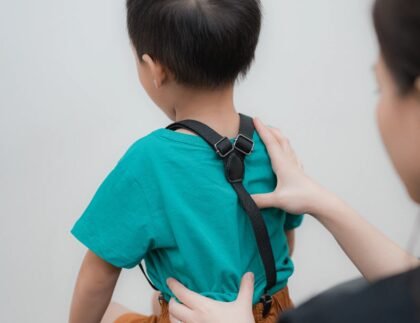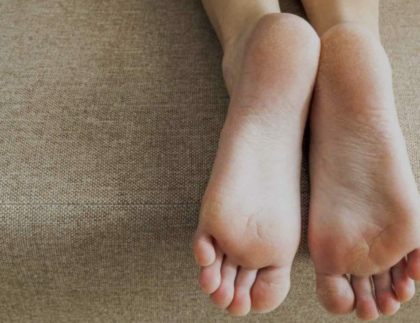
Childbirth is often described as one of the most beautiful moments in life—but it also comes with its fair share of physical challenges. For many women, the postpartum period is not just about adjusting to a new baby but also navigating the aches and pains that come with recovering from pregnancy and labour. The body undergoes tremendous changes, and for some new moms, pain can linger long after childbirth.
For many women, the most intense pain subsides within the first six weeks, but it’s not unusual for certain aches to persist for months. Each type of postpartum pain has its own timeline for recovery, depending on factors like the nature of your delivery and your overall health.
Common Types of Post Pregnancy Pain

Lower Back Pain
One of the most common complaints after giving birth is lower back pain. This happens because your spine and core have been under a lot of strain during pregnancy. Your body has been supporting not only your own weight but also that of your growing baby. After childbirth, the rapid change in body structure and posture can trigger discomfort in your lower back. Some women feel this pain for a few weeks, while others may experience it for months.
Pelvic Pain
During pregnancy, your body releases hormones to loosen your pelvic joints and ligaments in preparation for childbirth. Sometimes, this can lead to pelvic pain postpartum. The misalignment or shifting of pelvic bones can cause discomfort that lasts for weeks or even months. Pelvic pain may worsen with certain movements or activities, such as walking or climbing stairs.
Sciatic Nerve Pain
Ah, sciatica! That sharp, radiating pain running from your lower back down your leg can make daily tasks feel nearly impossible. For some women, pregnancy pressure on the sciatic nerve triggers pain that lingers postpartum. Simple lifestyle adjustments, like avoiding prolonged sitting or standing, can also go a long way.
Breast Pain
Sore, swollen breasts are common in the early days of breastfeeding as your milk comes in. This pain, often caused by engorgement, usually subsides within a few days once breastfeeding becomes established. However, if you experience blocked ducts or mastitis (breast infection), this can prolong discomfort and require treatment.
Abdominal Pain (Afterpains)
After birth, your uterus contracts as it returns to its pre-pregnancy size, which can cause cramping known as "afterpains." These contractions are often more noticeable during breastfeeding. For most women, afterpains last about 2 to 3 days but can continue for up to a week in some cases.
C-Section Pain
If you had a C-section, you’ll experience pain at the incision site. This pain can be sharp or aching and may last for several weeks. Most women see significant improvement within 4 to 6 weeks, but full recovery can take up to 12 weeks. Gentle movement, rest, and following your doctor's post-surgery care plan are key to managing this pain.
Painful Stretch Marks After Pregnancy

While stretch marks are a natural part of pregnancy for many women, some may find that their stretch marks are not just cosmetic but painful as well. The rapid stretching of the skin can cause itchiness, soreness, or sensitivity, especially in the weeks after delivery. Moisturisers and specially formulated stretch mark creams can provide relief. And remember, time helps too—most stretch marks will fade over the months.
After carrying a baby for nine months, it’s common for the abdominal muscles to stretch and even separate. This condition, known as diastasis recti, can leave you feeling weak in the core and cause discomfort in the abdomen and back. Some women notice a bulge in their belly when sitting up, which can be a telltale sign of this condition.
Joint Pain After Pregnancy
Hand, Wrist, and Finger Pain
Ever heard of "mommy thumb"? It’s a real thing! The constant lifting, holding, and caring for your baby can strain your hands, wrists, and fingers. Some moms even develop carpal tunnel syndrome due to fluid retention or repetitive strain. If you’re feeling numbness or tingling, wearing a wrist splint and adjusting how you hold your baby can relieve pain. Taking breaks and stretching your hands is also crucial.
Hip Pain
During pregnancy, your hips work overtime to support the weight of your growing baby. After birth, the sudden shift in weight and pelvic realignment can lead to lingering hip pain. You may experience aches or stiffness, especially after being in one position for too long. Gentle yoga, stretching, and even chiropractic care can help loosen up those stiff muscles and realign your hips.
Knee Pain
Knee pain after pregnancy? Yes, it’s real. The added weight you carried during pregnancy, coupled with altered walking patterns, can put stress on your knees. You might notice your knees feel weak or stiff, especially when going up or down stairs. To combat this, gentle strengthening exercises, plenty of rest, and supportive footwear can help ease the strain on your joints.
When Will Post Pregnancy Pain Go Away?
| Post-Pregnancy Pain | Recovery Timeline | Notes |
|---|---|---|
| Lower Back Pain | 2 weeks to 6 months | Caused by weakened core muscles and posture changes during pregnancy. Physical therapy and gentle stretching can help. |
| Pelvic Pain | 6 weeks to several months | Often due to pelvic misalignment or symphysis pubis dysfunction (SPD). Consider therapy or chiropractic care to restore pelvic balance. |
| Sciatic Nerve Pain | 4 weeks to 6 months | Caused by pressure on the sciatic nerve from pregnancy. Chiropractic adjustments or targeted exercises can alleviate symptoms. |
| Breast Pain (Engorgement) | 3 to 5 days | Common in breastfeeding mothers when milk comes in. Frequent nursing, warm compresses, and expressing milk can ease discomfort. |
| Perineal Pain | 2 to 4 weeks | Especially common after vaginal deliveries. Use ice packs, sitz baths, and pain relievers to manage healing in this area. |
| Abdominal Pain | 1 to 4 weeks | Due to uterine contractions or diastasis recti. Postpartum exercises targeting core muscles can speed recovery. |
| C-Section Incision Pain | 6 to 12 weeks | Healing varies, but avoid heavy lifting and monitor for infection. Full recovery can take longer for more complicated surgeries. |
| Painful Stretch Marks | 3 to 6 months (fading) | Stretch marks often fade within months but may not disappear entirely. Use moisturisers and creams with vitamin E to improve skin elasticity. |
| Hand/Wrist Pain | 2 weeks to 3 months | Known as “mommy wrist”, it’s caused by repetitive movements like holding the baby. Splints or therapy may help. |
| Hip Pain | 6 weeks to several months | Hip discomfort from pregnancy pressure or misalignment may persist. Exercises focusing on hip mobility and strength can aid recovery. |
| Knee Pain | 6 weeks to several months | Weight gain and hormonal changes can strain joints. Gentle activity and support braces can help reduce knee pain. |
This table provides a snapshot of how long each type of postpartum pain typically lasts and some useful suggestions for managing discomfort. Keep in mind that recovery can vary, and seeking professional advice if pain persists is essential.
Postpartum Chiropractic in Subang Jaya
Chiropractic for Post Pregnancy Pain

While more large-scale studies are needed to definitively prove the benefits of chiropractic care for postpartum pain, many women report relief after receiving treatments. This is especially beneficial for the areas of the spine, pelvic and joints to regain strength. Some smaller studies and clinical evidence suggest that chiropractic adjustments can reduce lower back pain and improve overall function, particularly in the postpartum period.
"Have been facing lower back pain issue since the first pregnancy and now with the second pregnancy, the condition become worst after gave birth. After had 2-3 sessions, I really felt the differences of my lower back condition."
— Jenny Lim

Your Experienced Postpartum Chiropractor
Stephanie Choo
Bachelor of Science (HONOURS) Chiropractic (ACM)
Perinatal Certified Chiropractor (ICPA)
Webster Certified Chiropractor (ICPA)
Chiropaeds
Upcoming BirthFit Leader
Pain after pregnancy is a natural part of recovery, but that doesn’t mean you have to suffer in silence. From back and pelvic pain to stretch marks and joint discomfort, understanding the types of pain you might face postpartum can help you take proactive steps toward healing. Listen to your body, don’t be afraid to ask for help, and most importantly, give yourself grace as you navigate this new chapter of motherhood.








